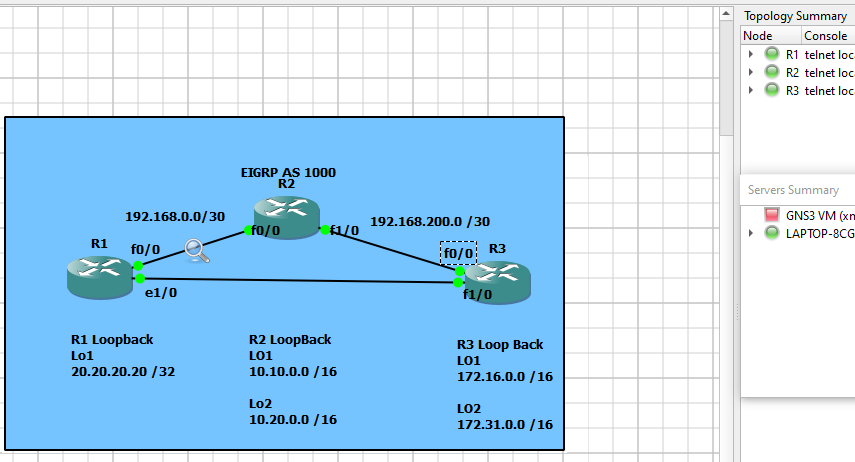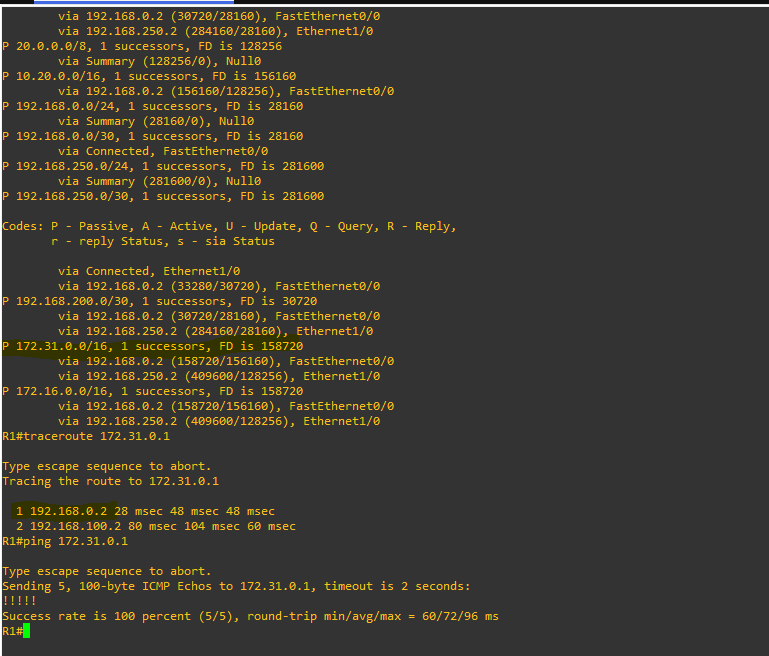
EIGRP – Beginner
[Summary / Aims]
Dynamic Routing Protocol – EIGRP. We are here to find out how Routers form EIGRP neighbor relationship with each others and how those routers exchange routing information. So that they will learn the new routing path. How EIGRP to select the best path to reach the destination network? Why EIGRP is fast convergence if compare with OSPF.
We are using 3 no. x Cisco router 3600 in this lab. R1,R2 and R3 is directly connected with Fast ethernet cable. In the other hands, we will create additional network by using Loopback interface on R2 and R3.

Now we will find it it how R1 becoming a Neighbor with R2
[EIGRP Neighbor]
On image below Figure 1.2, you can see. Once R1 has enable EIGRP in the router configuration . R1 will start sending EIGRP Hello message by using multi cast (224.0.0.10). Once the other Router received another Hello message from other Router. Router is sending EIGRP Topology to the Multicast, on Wireshark item no. 13 you can see.
Then it will change from Multi cast to Unicast for Acknowledgement. You can see on my Wireshark records, Item no. 14, R2 sending ACK packet to R1.

[EIGRP DUAL ]
Now we added a new connection between R1 & R3, but R1 using Ethernet cable ( low speed). We will see how EIGRP to choose which path. EIGRP is base on FD/ AD value to chose Successor and Feasible Successor, you can see the detail by using command ” show ip EIGRP topology” Next to the ip address, you can see 2 value. Left one is Feasible Distance (FD) , Right one is Advertise Distance (AD)
From R1 to reach R3 [ Loopback 172.16.0.0 ], you can go from 2 Paths.
Path A 192.16.0.0 -> 192.168.200.0 ->R3
or
Path B 192.168.250.0->R3

In this case, if it is RIP, RIP will use Path B, because RIP is using hop count. EIGRP will select Path A instead. you can see on figure 2.2.
Path A Feasible Distance 158720, Path B is 409600
Even though, path A need to go through 1 extra router, But base one EIGRP calculation (K1 = Bandwidth & K3 = Delay), to calculate FD value. due to the cable speed therfore EIGRP will select Path A.

[Result]
On Figure 3.1, R1 is able to ping R3 Loopback, Per R1 IP EIGRP toplogy, R1 is using 192.168.0.2 path to reach the network.
